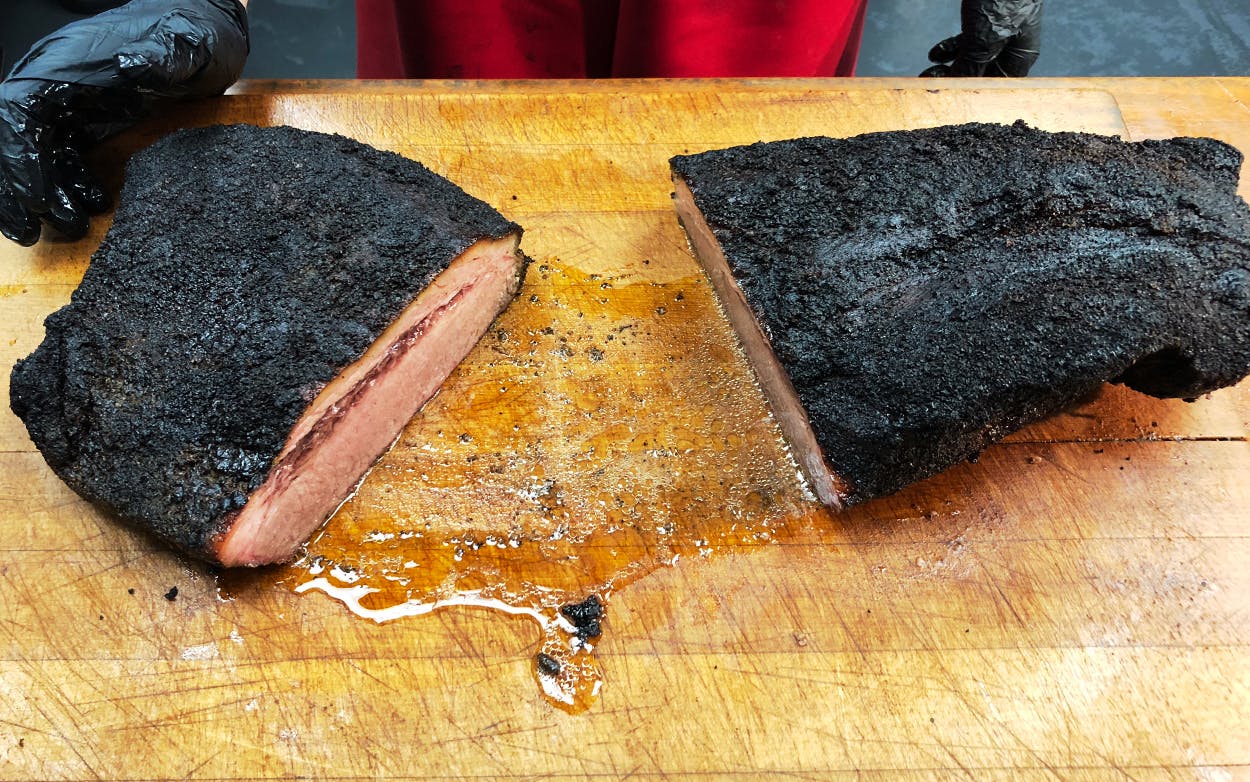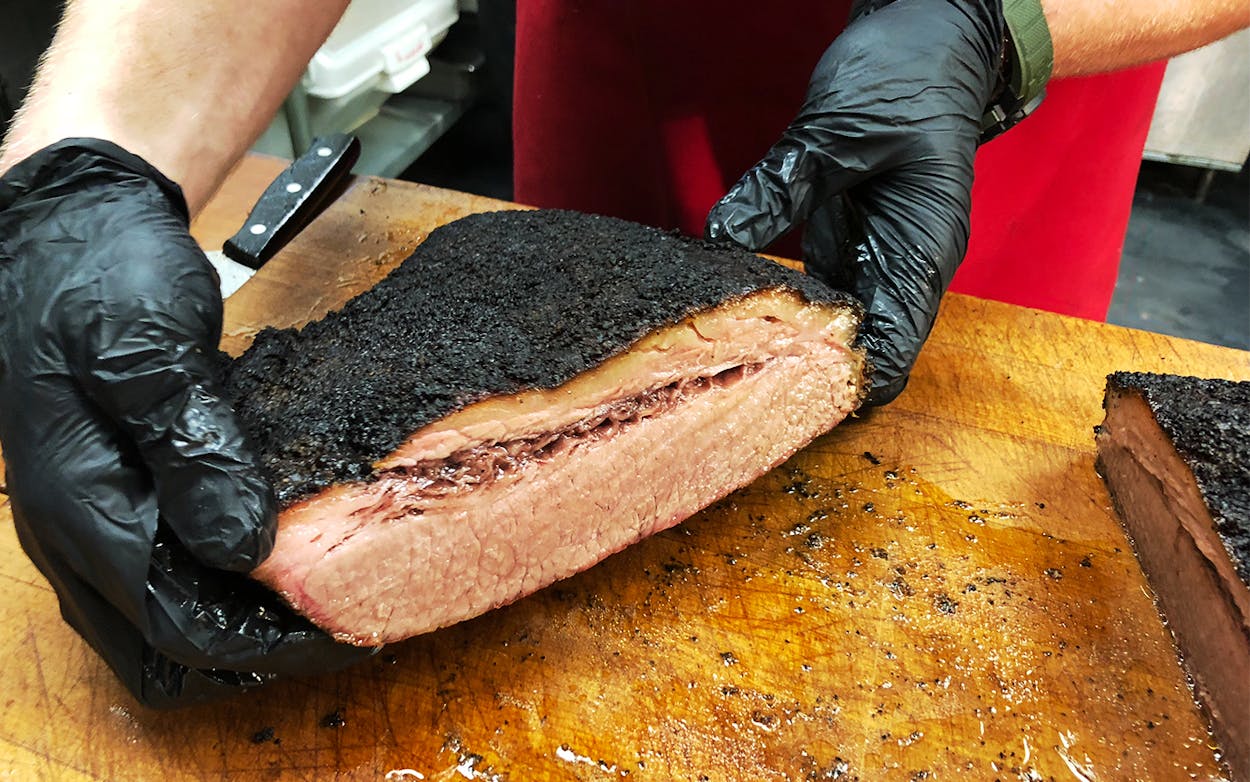Incessant food photography is part of my job, and over the years I’ve discovered the trick to getting the perfect shot of brisket: turn over the slices to capture the side that’s still juicy. It’s a way to do justice to the pitmaster’s work after spending a few minutes setting up the shot. If a brisket slice has dried out on my account, it’s only fair to show its better side when the camera is ready.
During a recent trip to a Texas barbecue joint, my tray arrived with several slices of fatty brisket. I turned them over only to find a desiccated slice that had been hidden at the bottom. The partially sliced brisket had sat out with its cut edge getting dry, and whoever sliced it didn’t seem to care that the first slice on my tray was on its way to becoming brisket jerky.
Sadly, this barbecue joint wasn’t the first to make this mistake. I’ve seen it plenty of times in the past, but it’s an unforced error that’s so easy to overcome, I’m baffled when it happens. That sacrificial slice can go into beans or chopped beef, but it shouldn’t be used for sliced brisket. There’s always a bit of trust lost when a customer finds an undesirable slice of barbecue hidden at the bottom.


The cutting block at the Slow Bone is Scott Austin’s domain most days of the week. He slices through plenty of brisket at the Dallas barbecue joint, and has learned some lessons for keeping the briskets moist and juicy. “That’s our showcase meat,” he explains. “We’ve got to take care of it.”
As soon as the first slice comes off a brisket, it starts to lose moisture. The quality of the meat begins its steady decline, so serving it quickly is the best defense against brisket drying out on the block. Austin says on busy days, given enough beef-hungry customers, he may not have to worry much about it. The slicing never stops, but when there’s a lull, he’s always ready.
His first tip is to slice from low to high. Starting on the lean side makes for smaller slices and less of an exposed edge on the brisket than cutting from the thick side of the brisket point. If you’re a right-handed slicer, he recommends simply placing the high side of the brisket on the left when slicing it.
They finish their briskets in foil at the Slow Bone, so each brisket is unwrapped before being placed on the block. Austin places the opened foil wrapper right next to the block, ready to receive the brisket as soon as he moves on to another meat. If he has a string of customers looking for ribs or sausage instead of beef, he wraps the brisket back in the foil to keep it juicy. “As soon as the line stops long enough for me to wrap the foil back around the brisket, that’s the priority,” he says.
Some customers ask for fatty brisket, which means he has to slice the brisket in half. Again, he wraps the brisket back into the foil as soon as he can, but he also makes sure to squish together the two cut edges of the brisket to keep them juicier for longer. If you have just a chunk of brisket left on the block, another simple trick is to turn it so the cut side is down on the block. This allows the bark to perform its duty of protecting the brisket. In this position, you can keep the brisket edge from drying out until you need to continue slicing it.
Austin’s position on the cutting block is an important one. The person who slices the barbecue at any barbecue joint should be treated as a skilled position. They serve as the final check on quality control before the barbecue reaches the customer. With all eyes on him as he builds the customers’ trays of barbecue, there’s a temptation to put on a show, and when Austin started, he would often press down on the the fatty side of the brisket after cutting through it for the first time, releasing a rush of hot, liquid fat over the cut edge of the brisket that looks like a waterfall. Look around barbecue Instagram for a spell and you’ll find plenty of examples (like the one below). I call it a “fatfall,” but most important, it’s a waste. “It looks great,” Austin says. “The customers love it. They go, ‘Look how juicy that is!’ In the back of my mind, I’m going, ‘Look how much juice I’m losing!'”
The brisket already loses enough moisture from water loss through steam and fat lost on the cutting block. As Austin says, “I’d rather they have that on their plate.” The slicer should do everything possible to keep the briskets juicy for the next customer. As Austin explains, “If somebody thinks your brisket is dry, they might not ever want to come back.”

- More About:
- Brisket








